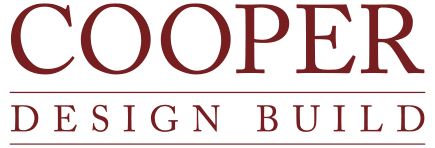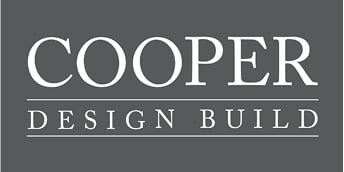What IS The Ask Cooper Anything Q&A Series?
We asked our community to anonymously send us any questions they had regarding remodeling, interior design, or general home improvement.
The goal of this series is to help provide clarity about the remodeling process and to answer specific questions from our community. We know that the remodeling process can be overwhelming and a major source of stress. Unfortunately, there's a lot of misinformation online that tends to contribute to this stress more than reduce it. We hope this series helps take some of that stress away and inspires you to tackle your remodeling goals with confidence.If you'd like to ask us your questions, you can submit them anonymously here. Based on the feedback we get from this blog post, we'd like to create a new post once a quarter.
Let's get to the questions!
Questions 1, 2, & 3:
Our first three questions touch on a topic that is top-of-mind for many of us right now:
"When will lumber prices come back down?
How does rising construction material costs impact overall remodel costs - such as a kitchen remodel (Cabinets, appliances, flooring, granite tops, etc)?
Does it make sense to delay my addition/remodel until Mid-2022 to take advantage of probable cheaper lumber?"
To provide some context, the cost of lumber rose dramatically during the first half of 2021, reaching a high of $1,607.50 per thousand board feet in May of 2021.
There were/are multiple factors at play, but here are a few of the main ones:
- As COVID-19 began sweeping across the country in the first half of 2020, many lumber mills in North America shut down and laid-off workers because they expected a dip in demand and for safety precautions. Instead, demand skyrocketed; new construction, remodeling, and DIY projects took off all across the country. This huge increase in demand, paired with dwindling supply, led to the extreme highs we saw in May.
- Lumber professionals have scrambled to rehire workers, truck drivers, and other supply chain professionals and now we’re finally starting to see light at the end of the tunnel. Prices per thousand board feet are now below $600 and continuing to decrease. Other construction material costs, such as those mentioned in the third question, are also still higher than pre-pandemic levels.
So, “when will lumber prices come back down?”
- They are currently coming back down!
“How does rising construction material costs impact overall remodel costs?”
- More likely than not, you will be paying more for a kitchen remodel in 2021 than you would have in 2019 or 2020. With that being said, you could easily end up paying more for a kitchen remodel in 2022 than you would have in 2021. Which leads us to the last answer...
Does it make sense to delay my addition/remodel until mid-2022 to take advantage of probable cheaper lumber?
- We wish there was a clear-cut answer we could give you, but that's just not the reality. Although lumber and construction material costs are expected to go down, there’s no guarantee that this is the case. We’re going through a truly unprecedented time; anyone who tells you they know what will happen next is not being truthful.
- If you have a project in mind, you should meet with a contractor and talk about your options. They’ll be able to help you evaluate your options and find a solution that works within your budget.
- Here's another point of consideration: Demand for contractors is higher than the current supply. If you wait until 2022 like many are suggesting, hoping to capitalize on lower construction material prices, you might have a hard time finding a quality contractor with availability to take on your project. If you reach out now, you can begin the planning process and book your preferred contractor, even if you want to hold off on construction until prices cool down.
Great questions, and best of luck with your projects!
Question 4: What are the best ways to reduce risk from unknowns when remodeling an old house?
We have some good news and some bad news:
- The bad news - when remodeling an old house, it’s very difficult to foresee or even reduce the risk. You won’t know whether you’re dealing with asbestos or lead paint until you get started tearing down walls and other structures.
- The good news - If you do uncover asbestos or lead paint, it’s an opportunity to upgrade substandard building practices and make your home healthy!
Remodeling old houses almost always means running into unforeseeable barriers during construction. A good contractor will help you plan for this by:
- Allocating money in the budget for unforeseeable changes.
- Working with local authorities to ensure your new spaces are safe and up-to-date.
- Inspecting each space to identify risks and opportunities for improvement.
Unfortunately, there’s not a great way to reduce risk. Our advice is to work with a contractor with experience renovating old houses and just know that you’re almost guaranteed to experience some hurdles along the way. Remodeling an old house is a labor of love, but worth it for many families we’ve helped over the years.
Good luck with your project!
Question 5: Is the current trend of a bath and shower wet room worth it? In a tight space, it may be the only way we can include a highly desired, free-standing tub, but unsure if it will hurt when it comes time to sell. (And it seems like cleaning would be difficult.)
We recommend answering these two questions to help you decide:
- Are you sure this is the only solution given your available space?
- How long will you be living in this home?
To dive deeper into the first point - there might be a way for you to get a free-standing tub without turning your space into a bath and shower wet room. Sometimes it just takes an outside perspective and creative eye to “create” extra space you didn’t know was possible. We would recommend getting a designer and/or contractor on-site to examine your bathroom and let you know if this is possible.
If you’re confident there’s no space, and adding space is not an option, that brings us to point number two - how long are you going to be living here? If you’re planning to move out in 1-3 years, then it might make sense to hold off on this type of project. While we don’t think creating a bath and shower wet room will dramatically hurt your home value, it might limit the pool of potential buyers when that time comes.
If you’re planning on staying for 5+ years, then go for it! Sometimes it’s hard to justify the additions or remodels that don’t result in increased home value, but you also can’t neglect the emotional return on investment and improvements to your daily life. These are the types of projects we recommend to people who are staying in their homes for many years to come.
Good luck with your decision!
Question 6: What are the steps to have your design/architecture team draw up detailed plans for the design build for a remodeling project in the near future?
We encourage anyone interested in learning more about our process to visit this page on our website: https://cooperdesignbuilders.com/design-build-process/
If you’re interested in talking about your project, please click here to schedule a consultation or give us a call at 503-282-0545.
Thank you for your questions! Want to ask us something? Submit your questions here.








